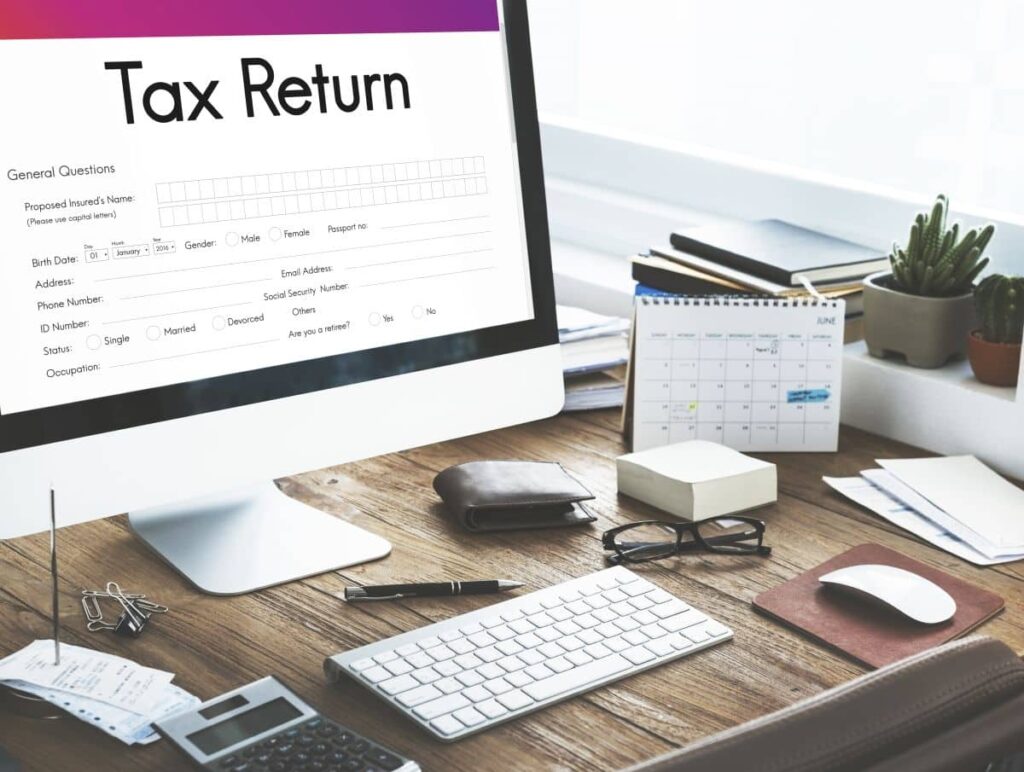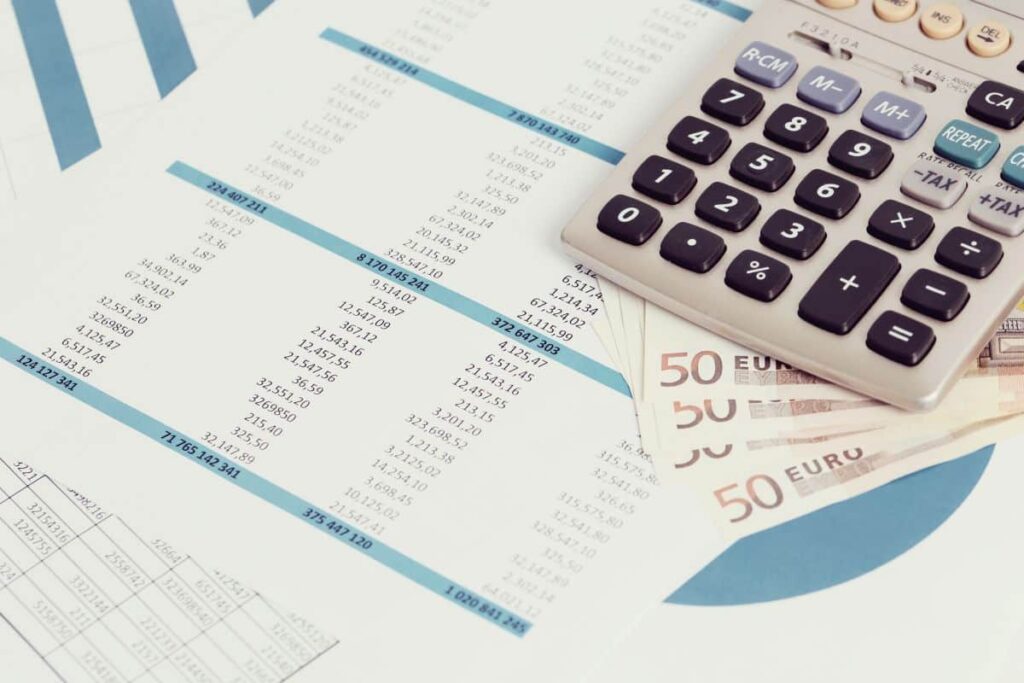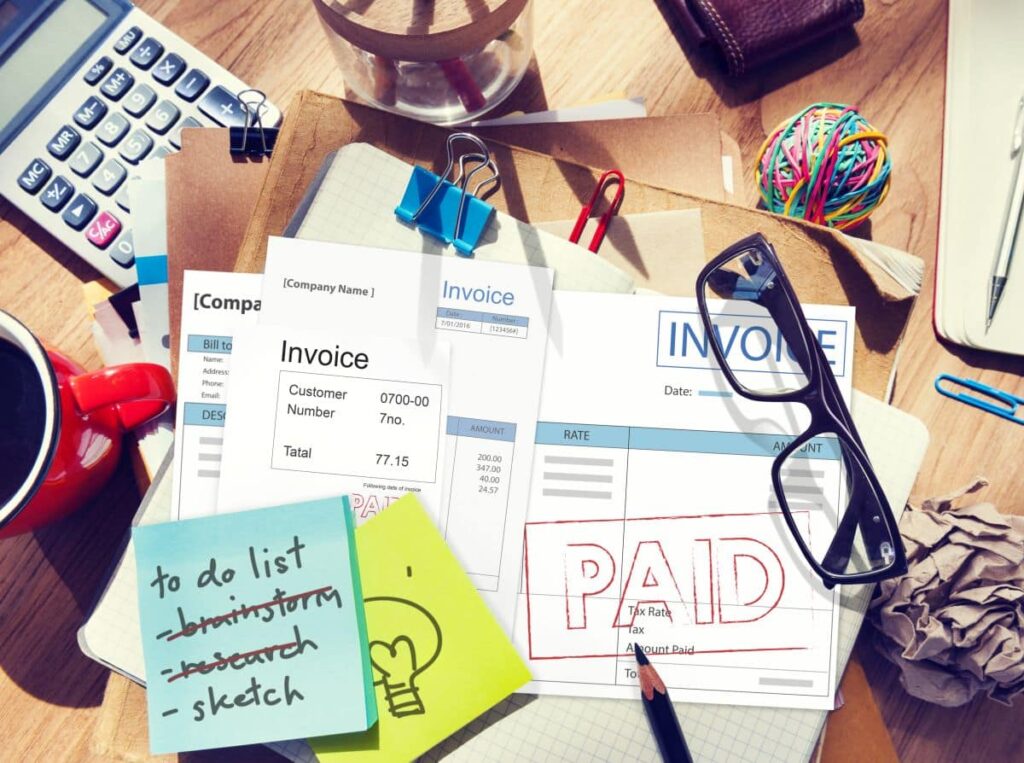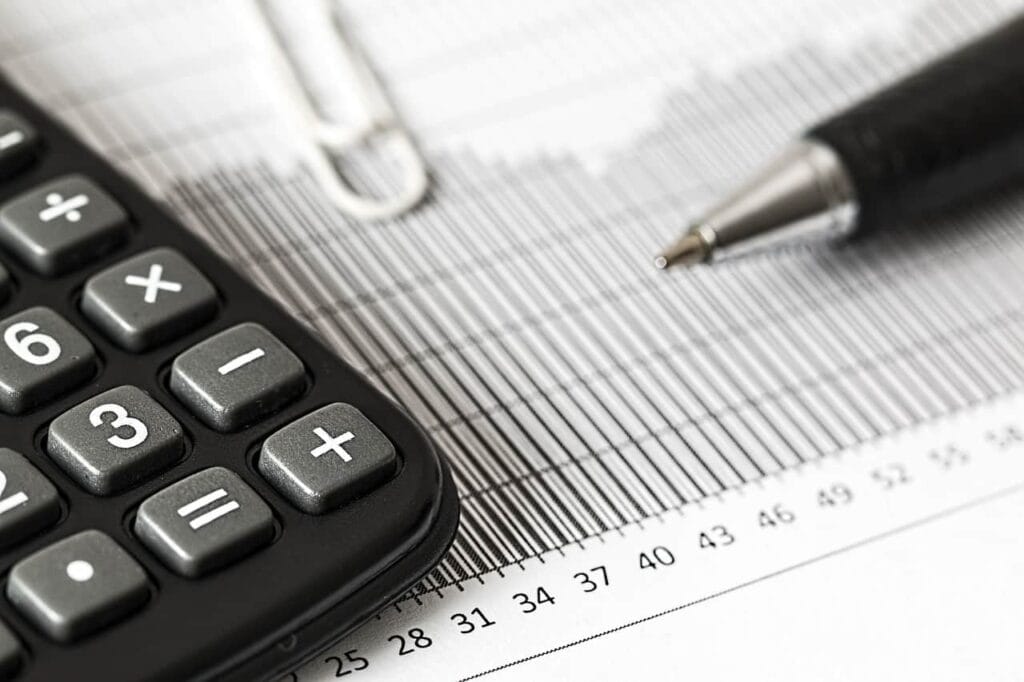Taxes can be a daunting and expensive task for many of us. So whether you're an individual or a business, it pays to start planning as soon as possible – particularly when it comes to tax season!
Tax planning may sound intimidating at first, but don't worry – there are plenty of simple strategies that you can implement now in order to reduce your tax liability this year and even help ensure a good night's sleep come April!
In this blog post, we'll discuss some effective yet straightforward tax-planning tactics that will have you sleeping better during the upcoming filing season. Keep reading on to find out more about how you could save money while still staying within ATO guidelines.
Let's get started!
Tax Planning
Tax planning refers to the process of structuring one's financial dealings in such a way as to pay the lowest possible amount in taxes.
It requires making strategic choices regarding how and when you invest, how you manage your business activities, and what kinds of revenue you receive.
Because efficient tax preparation has the potential to save you hundreds of pounds annually, it is in your best interest to seek the guidance of an expert.
What is a Tax Planning Strategy?
A well-planned method for reducing one's tax burden to the greatest extent possible is known as tax planning.
Tax planning is conducting an in-depth analysis of one's current financial status and coming to critical conclusions regarding the most effective ways to apply one's available resources.
Tax planning tactics may be applied to one's own personal finances as well as to one's own corporate affairs. In addition, individuals can benefit from tax planning by lowering their taxable income and increasing the number of deductions they are eligible for.
Tax planning is a strategy that can reduce a company's overall tax burden while simultaneously increasing its profitability.
There is a broad selection of tax planning tactics offered, and the particulars of your financial situation will determine the one that is most suitable for you.
You may decrease your tax liability and make the most of the resources available to you if you prepare your tax approach wisely.
Key Tax Planning Strategies
1. Deduction on Taxes Paid Immediately for the Purchase of Assets
Take advantage of the immediate tax deduction that is available for depreciating assets that have been purchased and first used by June 30 in 2023. There is no threshold restriction on the amount that the asset costs. Second-hand assets can be instantly written off for companies classified as small and medium-sized as long as their annual revenue is less than $50 million.
2. Tax Breaks For Small Businesses Are Available To Companies With Annual Sales Of Up To $50 Million
Tax advantages offered to small businesses include:
- A deduction is allowed right away for any prepaid expenses, provided that the amount paid covers a period of less than a year.
- A direct deduction can be made for a portion of the expenses that have been incurred immediately after starting a business.
- Streamlined guidelines for the trading of stocks.
- A tax credit for individuals who own small businesses, up to a maximum of $1,000, equal to 16% of the tax that would otherwise be owed on the nett income of any small company with a turnover of less than $5 million.
3. Prepay Interest on Loans
Taxpayers who have loaned funds to invest can confirm with their lenders to determine whether they can prepay interest to gain an initial tax deduction. This is accomplished by paying 12 months' worth of interest ahead of time as a one-time tax benefit. Investment loans on buildings, margin loans on shares, and company loans are all viable options with this type of financing.
4. Deductibility of Interest Paid on Loans Used to Finance Business Costs

The majority of the time, the interest paid on funding used for company expenses can be deducted from your taxes. Keep a line of credit or overdraft to fund the day-to-day costs of your company.
The interest on that line of credit or overdraft will be tax-deductible, with the exception of the situations listed below:
- The funds drawn from the account are used for one's own personal expenses.
- Taxes on income earned by individuals that have been paid in advance (including PAYG instalments),
- Payments paid for personal superannuation contributions.
Suppose you are presently utilising your personal money to fund your firm's operations, and you would rather use your personal money for something else. In that case, you should consider the possibility of obtaining financing from outside sources.
5. Small Business Technology Investment Boost
Small firms that have an annual revenue of less than $50 million will be eligible to receive a tax deduction of $1.20 for every $1 that they spend on depreciating assets and business costs that promote their digital adoption (such as portable payment devices, cyber security systems and subscriptions to cloud-based services).
The bonus relates to expenditures made beginning at 7.30 pm on March 29, 2022, and continuing through June 30, 2023. However, it can only be claimed on the income tax return for the year 2023. Because there is a limit of $100,000 placed on the total amount of expenditures that can be claimed each year, claimants who want to get the most out of their money should spread their spending out between the years 2022 and 2023.
6. Small Business Skills & Training Boost
Small firms, defined as those with annual revenues of less than $50 million, will be eligible for a tax deduction of $1.20 for every $1 spent on outside training classes for staff that are delivered in Australia or online by licensed training institutes.
The increase applies to expenditures made beginning at 7.30 pm on March 29, 2022, and continuing until June 30, 2024. However, it can only be claimed on income tax returns for the years 2023 and 2024. There is no limit placed on the quantity of boost that can be acquired in this manner.
7. Superannuation Contributions
Before June 30 in 2023, you can make the most of your superannuation deductions by doing the following:
- Ensure that all employee payments to superannuation are paid in full and completed by June 30 2023;
- Suppose your superannuation balance is less than $500,000, and you have made concessional contributions totalling less than the concessional contributions cap of $27,500. In that case, you may make additional concessional contributions in successive financial years for unutilised sums.
This is provided that your superannuation balance is less than $500,000 and that you have stayed within the concessional contributions cap. A carryover of unused cap sums is permitted for a period of up to five years.
- If your annual income is less than $56,112, it's possible that you'll be qualified for the co-contribution from the government. You can contribute to $500 to your super fund, and the government will match your contribution dollar for dollar, limited to a total of $500, but only if your contribution is made after taxes.
The benefit is available in its entirety for those whose annual income is less than $41,112, and it begins to diminish for those whose modified taxable income is between $41,112 and $56,112.
8. Bad Debts
Examine your older debtors to see whether any of them are carrying unfavourable credit ratings (i.e. not recoverable). If they are, you should get a tax benefit for this year by writing them off by June 30 in 2023.
To qualify as a bad debt, there has to be a remote or non-existent possibility of getting paid back the money owed, like when the debtor is bankrupt or unable to be located. Before declaring a debt to be written off, records must be retained to demonstrate that reasonable efforts have been made to collect on the amount. You are free to continue going after the debtor even if the conditions alter in the future.
9. Stock Management
Conduct an inventory audit to determine whether items are no longer relevant or cannot be used. Then, to avoid losing money, write off these stock items by June 30, 2023.
10. Farm Management Deposits (FMDs)
Farm Management Deposits (FMDs) are a type of investment that can help primary producers reduce volatility in taxable profits due to economic and seasonal fluctuations to major production revenue. These fluctuations can be reduced by investing in FMDs.
These types of FMDs pay interest, but they have to be held for at least a year in order to keep the tax advantages associated with investing in an FMD. Those benefits are lost if they are held for less than a year. The most amount that can be deposited at one time is 800,000 dollars.
Think about whether or not you could benefit from using FMDs to lower the amount of taxable income you report this year or whether or not you have had any FMDs that you could cash out if your income is significantly lower than the national average.
11. Capital Gains Tax (CGT)
Suppose you've made any capital gains from the sale of investments or business assets this year. In that case, you should investigate whether or not you are capable of compensating those gains by crystallising whatever capital losses on the sale of many other assets (where possible) or whether or not you are eligible for the CGT small business concessions.
If you have any capital gains, consider whether or not you are allowed to do either of these things. Then, as soon as possible, but no later than June 30, 2023, please get in touch with a consultant to discuss any possible capital gains tax.
12. Private Health Insurance Rebate Changes
The welfare benefits of the private health insurance rebate are subject to an income test. This implies that if you earn a higher income, your rebate claim might well be lowered, or you might not be eligible for any rebate at all. If you don't not have private health insurance, the rebate test does not apply to you.
It is your obligation to notify your private health insurer if you move into a higher income band because several private health funds have the rebate amount set as a default to the greatest possible rebate amount. This can be accomplished using one of the following methods:
- Sign in to the online site for your private health insurance, and then follow the on-screen instructions. (In most cases, this will state something along the lines of nominate rebate tier.)
- Make a call to your private health insurer and let them know which rebate tier you belong to so they can process your claim.
After that, the eligibility for the rebate is reviewed every year inside your income tax return, and any balance that remains after that is either reimbursed to you or repaid in full to the Australian Taxation Office.
If you go up to a higher tier, the levels of rebate and fee that apply to your situation will shift accordingly. In light of these alterations, it is important to give some thought to the impact on one's finances that having private health insurance coverage will have. After you have paid for your private health insurance, you will then be given the test.
You must consider paying your health insurance premiums now if you'll move up into the next tier in the following fiscal year. Doing so will qualify you for the same level of rebate that you have been receiving up until this point.
13. Division 293 Tax on Super Contributions
If your annual income is greater than $250,000, you will be required to pay an extra tax of 15% on any concessional super contributions you make.
The following are considered forms of income for the reasons of the Div 293 tax:
- Your Taxable Income
- Reportable Superannuation Contributions
- Reportable Fringe Benefits
- Total Net Investment Loss (these are added back to your taxable income)
Employer contributions, salary sacrifice, and personal deductible contributions are all examples of concessional contributions.
14. Company Loss Carry-Back
A temporary tax relief enables qualified businesses with an accumulated revenue of less than $5 billion to carry back tax losses suffered in the 2020 to 2023 financial years. These losses can then be used against profits that were taxed in a prior year, 2019 or later. The relief is only available until the end of the fiscal year in which the losses were incurred.
If these businesses choose to make use of this method when they file their tax return for the fiscal year 2022-23, they will be eligible for a tax offset that is redeemable and will be applied to the year in which they incurred a loss. As a result, the losses that are carried back can be, at most, the earnings from earlier tax filings, and they can produce a shortfall in the franking account.
Any tax losses that have not been fully offset against previously taxed profits or that the taxpayer has opted not to utilise will be carried forwards as per the usual procedure.
Do Not Mix Up The Company's Funds With Your Own Funds

The so-called "deemed dividend" laws wind up being problematic for a great deal of small enterprises.
According to the tax law, loans and advances made to shareholders of private companies or their associates are considered to be taxable and unfranked dividends for the shareholders of the private companies. The purpose of these regulations is to prevent the profits of private enterprises from being given to shareholders in the form of "loans" that are exempt from paying taxes.
If you discover yourself in the position of having to borrow funds from a business in which you are a member, you should make sure that the cash is repaid before the deadline for the firm's tax return for the year. Issue a dividend and count the amount received as income if that can't be done; in such case, the dividend will be franked, assuming that's anything that can be done with it.
You might also sign into a loan arrangement that complies with the requirements, complete with a commercial interest and principal payments as well as a predetermined loan time.
It is important to be aware of the potential tax repercussions associated with the private utilisation of corporate assets for an amount that is less than their current market value since this can also fall under the purview of the regulations governing declared dividends.
The quantity of the "deemed dividend" is calculated by deducting any money that was originally paid for the utilisation of the assets from the "arm's length price" that would've been paid for the utilisation of the assets under normal market conditions.
There is also the possibility of making what is known as an "in-specie" dividend, which refers to the transfer of an asset to a shareholder rather than the payment of a cash dividend. But, again, the asset's current value will determine whether or not this course of action is cost-effective.
Alternatively, suppose the shareholder has originally given the business financial assistance as a loan. In that case, the asset could be handed to the shareholder in exchange for the payback of that debt, subject to the assessment of the asset.
The Golden Rule - Keep Records
The law stipulates that records must be preserved for a period of five years and must contain the following information:
- Sales receipts
- Expense invoices
- Credit card statements
- Bank statements
- Employee records (wages, super, tax declarations, contracts)
- Vehicle records
- Lists of debtors and creditors
- Asset purchases
Paper or digital formats can be used to store records; either way, they should be simple to access. However, companies regularly need help when the ATO asks them to authenticate transactions by producing supporting records. As a result, even "innocent" firms may find themselves unable to give the documentation that is expected of them.
Other Strategies
As part of their preparation for paying taxes at the end of the year, businesses have access to a variety of alternative tax planning tactics. These are the following:
- Focusing on the importance of trading stock at either cost, market selling value, or replacement value rather than writing off the value of an obsolete trading stock before June 30, 2023.
- Arranging cash payments of Division 7a loans to corporations before the end of the financial year to avoid the requirement of declaring dividends to shareholders.
- In order to qualify for a tax break, you must ensure that worker pensions are paid by June 30, 2023, rather than July 28, 2023.
- Payments to concessional superannuation funds for company owners, as well as extra salary sacrifice contributions, up to the maximum allowable amount for superannuation, which is $27,500.
- Utilising concessional superannuation quotas from previous years that were left unused in accordance with the Concessional Catch-Up guidelines. This is contingent on meeting certain eligibility requirements, which you should go over with your advisor.
- Any costs that can be brought forwards and incurred before June 30 in 2023.
Workers need to ensure that their Single Touch Payroll has been finished and that all reconciliations with government revenue agencies (like Payroll Tax) have been finished and submitted before moving on to the next step. This is critical from a governance standpoint.
Frequently Asked Questions
- The money must have been spent by you and not have been reimbursed by your employer;
- The expense must directly relate to earning of income; and.
- You must be able to prove the expense by having a record such as a receipt.
Records are written evidence of your income or expenses, these can be either paper or electronic. You need to keep records that support the claims you make in your tax return. For most expenses you need a receipt or similar document from the supplier.














